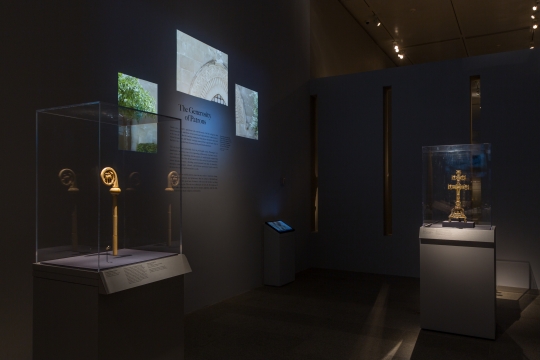In the exhibition Jerusalem 1000–1400: Every People Under Heaven, the Metropolitan Museum is exploring for the first time, in the most complex city in the world, the period that the museum considers to be the most creative.
Between the years 1000 and 1400, Jerusalem was not just the cradle for the world’s three great monotheistic religions; the city played a similar role for many other cultures, religions and languages. The exhibition’s curators have set out to show the key role played by Jerusalem in its status as a holy city on the art of the Middle Ages and vice-versa,
The Treasure of Oignies
The King Baudouin Foundation is participating in this exhibition through the loan of three pieces from the Treasure of Oignies, a collection that was entrusted to it in 2010 by the Sisters of Notre Dame of Namur.
The Treasure accounts for some fifty pieces dating from the 13th century – especially religious silverware – made by the monk Brother Hugo and his colleagues. The collection is a real testimony to the lifestyle of the Middle Ages and the relationship between Western Europe and the Middle East. Jacques de Vitry, the main patron of Hugo d’Oignies, lived in Jerusalem for several years and whilst there, he seized the opportunity to send back numerous precious materials to the Priory of Oignies.
A marvel
Three pieces were selected from the Treasure for the exhibition: a reliquary in the form of a Byzantine cross, attributed to a workshop in the Holy Land; a bishop’s ring that belonged to Jacques de Vitry, set with sapphires which were greatly valued in the 12th and 13th centuries; and a bishop’s crozier that belonged to the Bishop of St John of Acre.
The rare and precious materials used, the creative refinement, the technical mastery and the excellent state of conservation of the pieces make the Treasure of Oignies a singular collection. Moreover, it is no hollow claim to say that the Treasure is considered to be one of the “7 Wonders of Belgium”
Jerusalem 1000-1400: Every People Under Heaven runs until 8 January 2017 at the Metropolitan Museum of New York.
